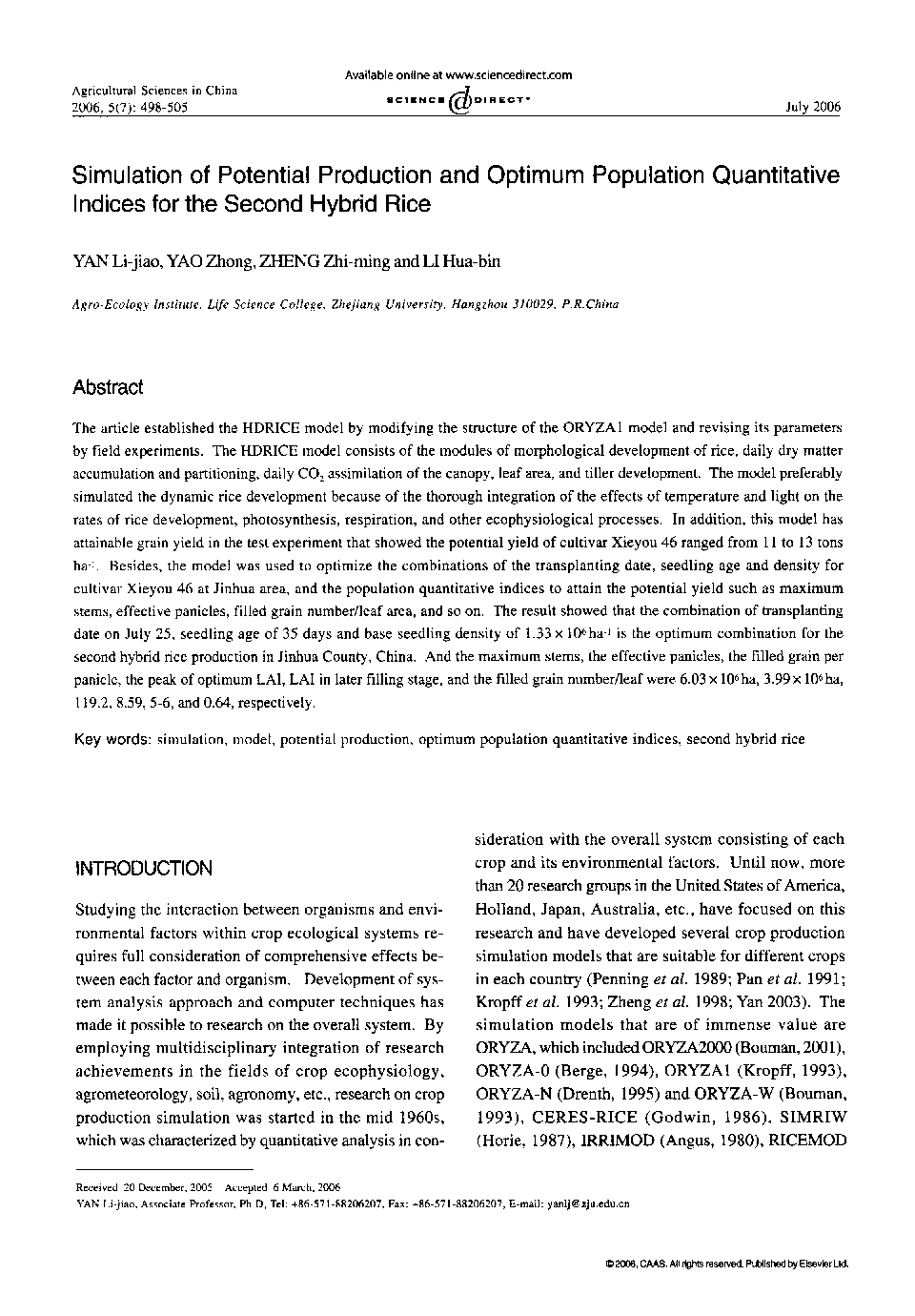| کد مقاله | کد نشریه | سال انتشار | مقاله انگلیسی | نسخه تمام متن |
|---|---|---|---|---|
| 4491062 | 1317806 | 2006 | 8 صفحه PDF | دانلود رایگان |

The article established the HDRICE model by modifying the structure of the ORYZA1 model and revising its parameters by field experiments. The HDRICE model consists of the modules of morphological development of rice, daily dry matter accumulation and partitioning, daily CO2 assimilation of the canopy, leaf area, and tiller development. The model preferably simulated the dynamic rice development because of the thorough integration of the effects of temperature and light on the rates of rice development, photosynthesis, respiration, and other ecophysiological processes. In addition, this model has attainable grain yield in the test experiment that showed the potential yield of cultivar Xieyou 46 ranged from 11 to 13 tons ha−1. Besides, the model was used to optimize the combinations of the transplanting date, seedling age and density for cultivar Xieyou 46 at Jinhua area, and the population quantitative indices to attain the potential yield such as maximum stems, effective panicles, filled grain number/leaf area, and so on. The result showed that the combination of transplanting date on July 25, seedling age of 35 days and base seedling density of 1.33×106ha−1 is the optimum combination for the second hybrid rice production in Jinhua County, China. And the maximum stems, the effective panicles, the filled grain per panicle, the peak of optimum LAI, LAI in later filling stage, and the filled grain number/leaf were 6.03×106ha, 3.99×106ha, 119.2, 8.59, 5–6, and 0.64, respectively.
Journal: Agricultural Sciences in China - Volume 5, Issue 7, July 2006, Pages 498-505